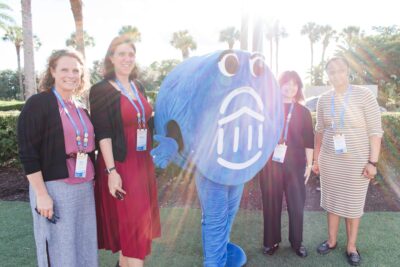What are pivotal moments—and how do they influence student success?
Editor’s note: EAB’s Annie Yi and Natalia Alvarez Diaz delivered this talk, Understanding and Designing Interventions for Pivotal Moments, at our national Student Success Collaborative summit, CONNECTED19. Their speech has been lightly edited and adapted for the web by Emily Arnim.
Anyone who works in student success knows that there are times when students encounter a crossroad. Navigating these crossroads can mean the difference between success and failure. At EAB, we call these pivotal moments.
Over the course of this year, student success leaders at two- and four-year colleges alike expressed interest in learning how they can better recognize and inflect these decision points to improve student outcomes.
To better understand the range of pivotal moments that can affect students, we asked members of the Student Success Collaborative and EAB staff to share their own pivotal moments from college. Watch the video below to see what they shared:
What are pivotal moments?
Our conversations revealed that pivotal moments can encompass the high points in a student’s college career—the moments that help her discover and fulfill her potential. But they can also be the low points—the moments that can derail a student from continuing her college journey.
The problem? Students often aren’t aware that they’re experiencing pivotal moments as they happen. “A lot of those pivotal moments aren’t recognized as pivotal to students in the moment,” explains Chris Hutt, assistant vice president for academic advising at Kennesaw State University. Without clear guidance or good signposting, many students struggle to recognize the importance of the moments as they encounter them and navigate them effectively.
A lot of those pivotal moments aren’t recognized as pivotal to students in the moment.
Chris Hutt, Assistant Vice President for Academic Advising
Kennesaw State University
Pivotal moments are unique to each student
In preparing for their presentation at EAB’s National Student Success Collaborative summit,CONNECTED19, Annie Yi and Natalia Alvarez Diaz found that seemingly straightforward decisions were more complicated than they had originally thought. For instance, moments like registration and financial aid—which at first appeared binary and transactional—involve complex decisions across multiple variables for students.
Yi and Alvarez Diaz also found that there is no universal set of moments; they vary by institution type, as well as by college, program, and even subjective experience. For example, the wealth of employment opportunities is a major reason why cybersecurity draws so many students. But one partner shared an anecdote about a fourth-year international student majoring in cybersecurity. She had only just discovered that her non-resident status would preclude her from the security clearance she needed for jobs in the field. A pivotal moment passed her by—and no one had told her how to navigate it effectively.

Why students struggle to navigate pivotal moments—and why schools struggle to help them
Schools generally do a poor job of communicating moments that could be pivotal to students.
For example, most administrators know that financial support is directly correlated with persistence and completion, and that financial aid documents should therefore be a top priority for students. But for students, financial aid due dates approach alongside an onslaught of other onboarding requirements, and they might not know which items to prioritize.
Even when students are aware of these pivotal moments, schools often don't reveal what the downstream consequences might be.
For instance, course withdrawal has several downstream consequences that students often aren’t aware of. Administrators know that a student who withdraws could fall out of Satisfactory Academic Progress or lose financially eligibility. But students often consider only the near-term consequences: the relief of not having to take a class they’re struggling in.
When students stumble off their intended path, they begin to lose their sense of belonging and ability to succeed, and often don’t know how to get back on track.
For example, administrators know that while selective majors are often great programs, they’re not the only way for students to achieve the kind of career and futures they desire. But for a student who has invested in her identity as an engineer or a nurse, not getting into her intended major could become the moment she questions why she’s in school to begin with.
More Blogs

Four signs it’s time to break up with your student CRM

Three lessons from 1,200 student success leaders on higher ed’s future
